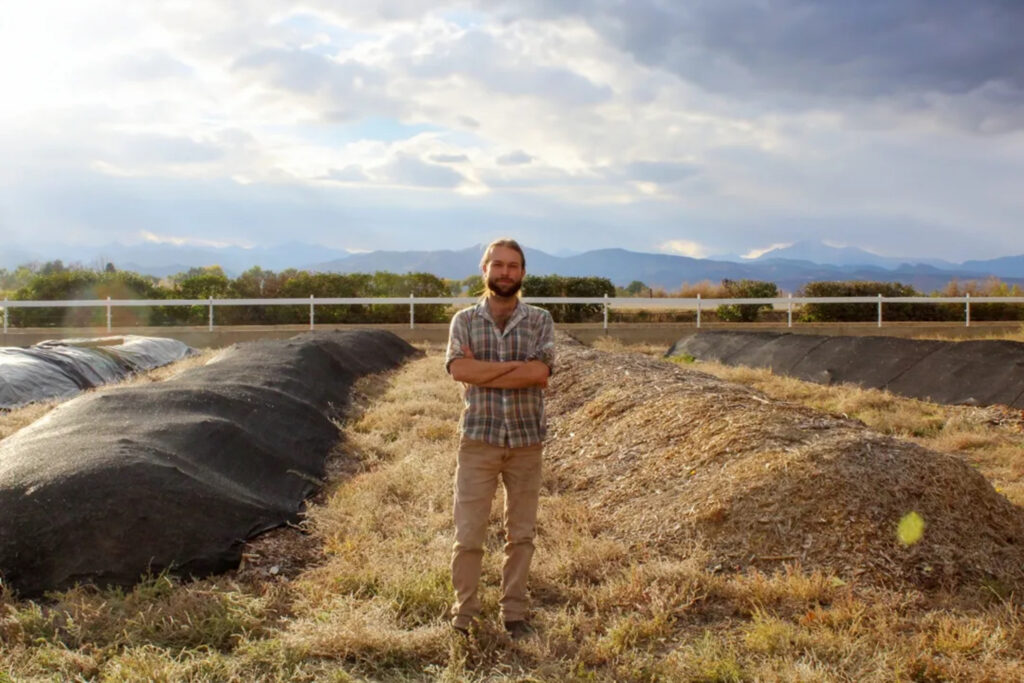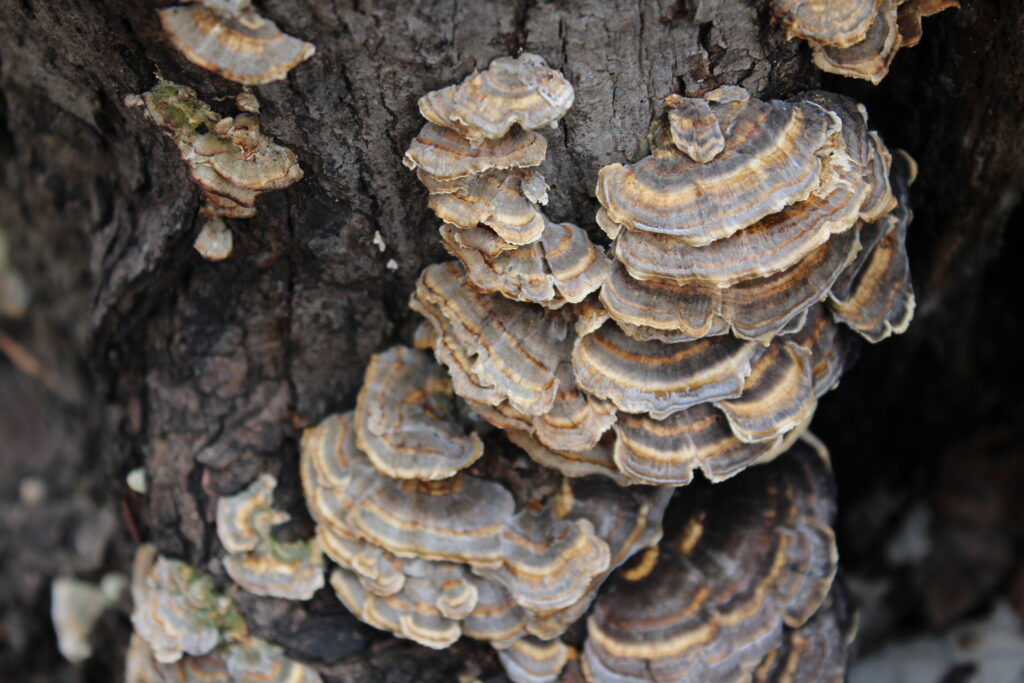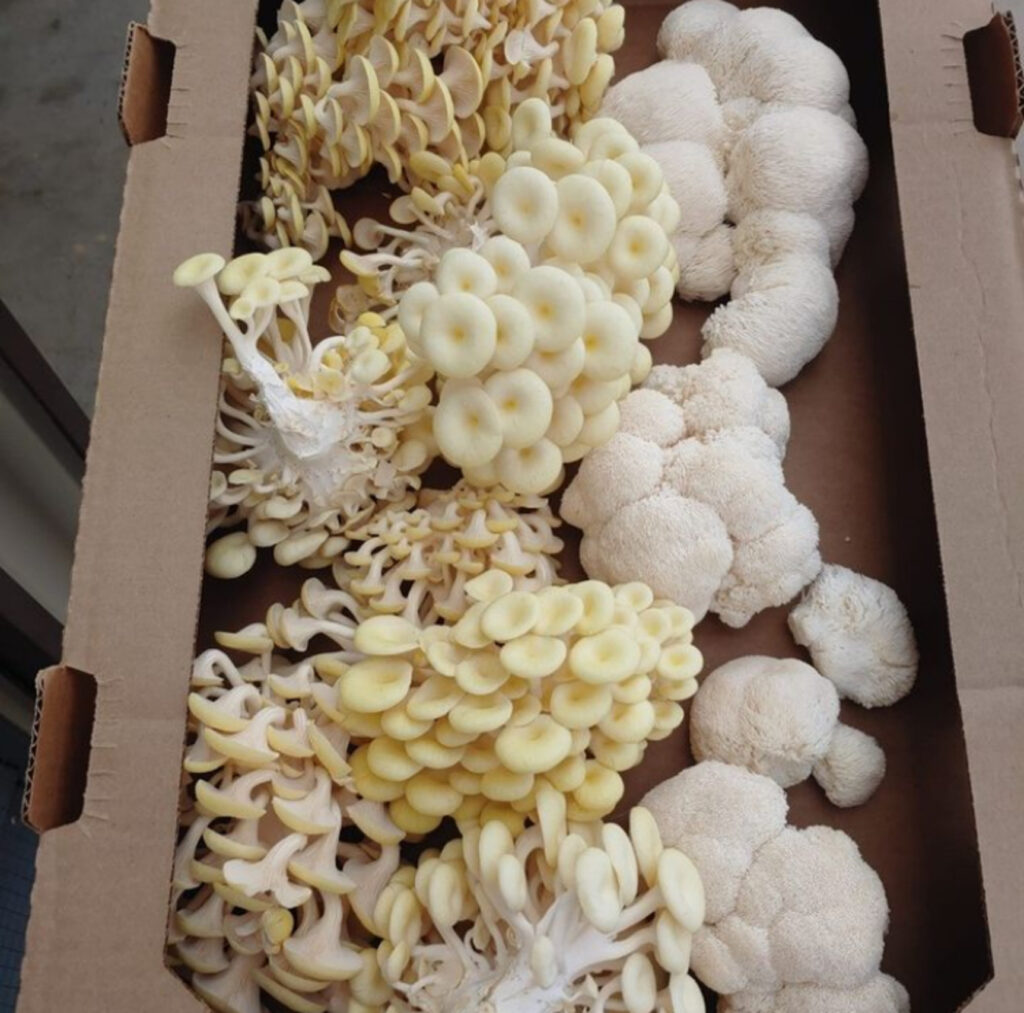In the foothills of Boulder, Colorado, mushrooms are making it into mainstream forest management.
In the foothills of Boulder, Colorado, root-like structures of mushrooms — known as mycelia — are stretching out their limbs. Growing in bags of wood chips at Boulder Mushroom (a hub of mycological research, innovation, and fungi), these thread-sized organisms have a daunting challenge ahead. An innovative project, led by Boulder Mushroom founder and owner Zach Hedstrom, is using mushrooms to mitigate the spread of megafires and improve the soil health of surrounding agricultural lands in the process.
Wildfires are an ever-present concern on the Front Range. Fresh in the memories of Boulder County residents, the Marshall Fire swept through in 2021, quickly becoming the most destructive fire in Colorado history in terms of buildings lost to the flames.
Historical fire suppression policies have changed the natural ecology of Colorado’s forests over the past century, producing unnaturally dense tree growth and creating easy fuel for a spreading wildfire. Forest managers regularly initiate prescribed burns and thin forest overgrowth to mitigate wildfire risk and keep forests healthy. But thinning results in piles of branches and logs that need to be moved or burned later lest they add tinder to a runaway fire.
The U.S. Forest Service has initiated a ten-year program aimed at mitigating wildfires on fifty million acres of fire-prone land across the country. Costing $5 billion, the federal project includes thousands of acres in Colorado, where an abundance of slash piles (collections of stumps and other woody debris remaining after trees have been cut) must be addressed.
“There are projects where you might have twenty to thirty truckloads of material, and it can quickly become unsustainable in terms of cost and emissions related to transport,” said Hedstrom. Wood debris taken out of forested areas is typically transported to a location where it can be safely burned (which releases emissions) or turned into wood chips.

While mushrooms may seem an unexpected solution to the increasing intensity of wildfires, the relationship fungi have with other organisms is what makes them so special. Their ability to decompose twigs and branches makes them useful in a variety of ways.
To help mitigate the intensity and spread of future mega-fires and save forest managers from hauling or burning wood waste, Hedstrom is applying mycelia to these excess piles. Fungi can speed up the decomposition of wood into nutrient-rich soil, promoting plant growth in the forest ecosystem, sequestering carbon, and supporting local agriculture.
Mushrooms are known for their unique recycling abilities and nutrition benefits (both to humans and ecosystems). For Hedstrom, the idea of harnessing a mushroom’s decomposing capabilities came from an experiment on an organic vegetable farm. After a tree on the farm had fallen during a windstorm, Hedstrom and the farm owner introduced native oyster mushrooms to wood chips from the tree. They observed the decomposition process, which saved them the hassle of chopping the tree for firewood or removing it.
Left untouched, wood waste is eventually recycled back into the forest ecosystem, Hedstrom explained, but fungi accelerates that process. While mycelia can take up to two years to turn slash piles into soil, it’s not uncommon for excess timber in thinning projects to sit for years before being burned or sent through the chipper, and natural decomposing in the dry Colorado air can take decades.
“Fungi as a living organism can deal with the material so we’re just applying a biological perspective to the existing recycling process,” Hedstrom said. “It’s a way to safely leave more of the material in its natural ecosystem [instead of removing it to break down elsewhere] and recycle it back into soil.”
The process is straightforward. Boulder Mushroom staff give selected areas of wood debris a healthy dose of wood shavings and mycelia that have previously been growing together at the Boulder Mushroom lab. They then spray the piles with water, as damp conditions are more conducive to decomposition. As mycelium grows, it secretes enzymes that break down the piles of biomass.

Headstrom explained that different species of fungi work better in different situations, depending on the type of wood waste, as certain fungi are faster at breaking down debris from different tree species. The type of fungi used also depends on the specific location, since various environmental conditions, such as precipitation and landscape, can affect the breakdown process.
Supported by the Boulder County Sustainable Agriculture Fund, Boulder Mushroom completed a pilot trial in 2021 that showed beds of mycelium-inoculated woodchips decaying much faster than the same amount of non-inoculated wood chips over a twelve-month trial period.
In partnership with farmers and foresters from the Boulder Watershed Collective and Grama Grass and Livestock, Boulder Mushroom received a $100,000 grant from the Boulder County Climate Innovation Fund to expand the project, including helping to restore depleted agricultural land. The fund was established in 2022 to provide financial support to companies tackling climate change in Boulder.

Hedstrom is also considering more efficient ways to kickstart the process, including turning mycelium into a liquid that could be sprayed over wider areas of land. He’s also working on finding the best ways to “train” fungi for fieldwork, as all fungal inoculants are grown in Boulder Mushroom labs. This training involves feeding specific waste products to fungi — slowly increasing the amount — to create a fungi strain adept at decomposing particular materials.
“I'm looking forward to providing an opportunity for more biological sustainability practices to be adopted in mainstream land management,” said Hedstrom. He explains that the methodology at work not only is applicable to decomposing wood piles, but also can shift how we view sustainability practices. By using a process that already exists in nature, Hedstrom said, the project is creating a more sustainable approach to challenges facing forest managers, from the ground up.


